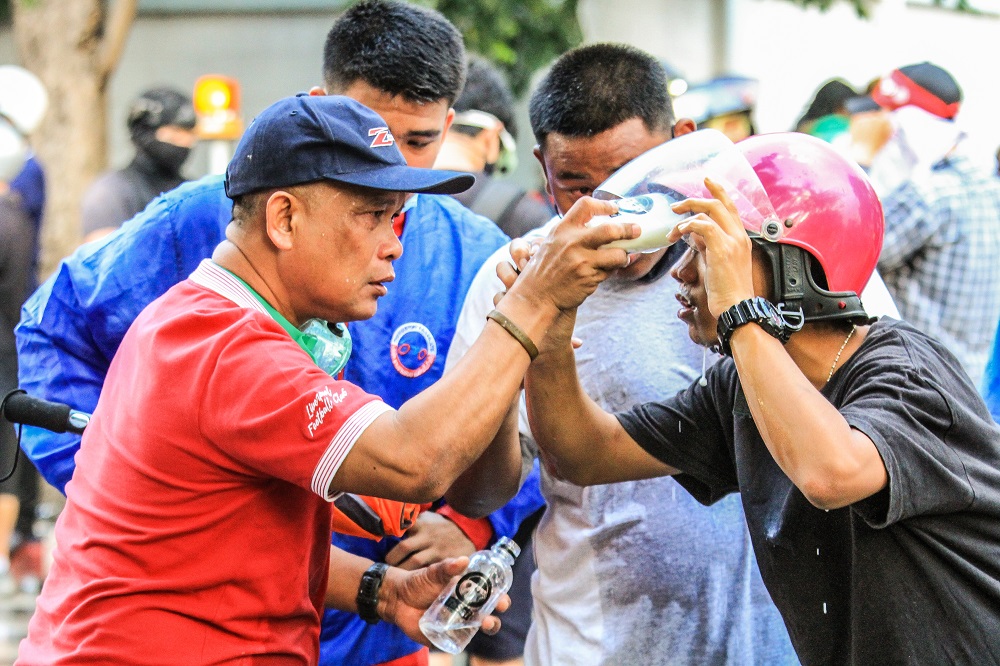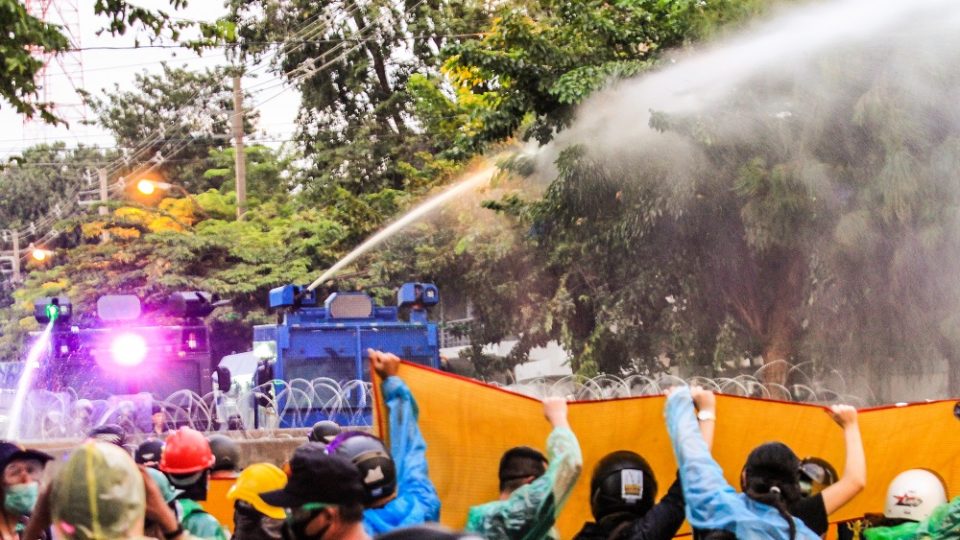Lawmakers were divided yesterday on amending the constitution while, outside the Parliament, at least 50 people vying for their attention were injured in clashes with riot police.
Dozens of protesters required medical treatment after the police held them off with chemical irritant-laced water cannons and tear gas for nearly six hours.
Today, the assembly is debating changes to the charter a second day and are expected to vote on any bills that may move forward.
So far, opposition parties including Pheu Thai and Move Forward have committed to seven revisions that have been proposed, while governing coalition parties including Palang Pracharath, Democrat and Bhumjaithai won’t accept anything that touches on the monarchy – a once fringe demand that has become central to the protest movement.
Among the seven charter amendment drafts, six were proposed separately by coalition parties and oppositions. None addresses the royal institution.
The seventh proposal, by the Internet Law Reform Dialogue, or iLaw, has amassed more than 100,000 signatures. It seeks to amend the entire junta-backed 2017 constitution including by preventing “outsider” prime minister, eliminating the junta’s “National Reform Plan,” and calling for senators to be entirely elected by the people.
All groups agreed to establish a 200-member Constituent Assembly to revise the new constitution, but not on how it would be selected. The opposition and the government’s drafts make off-limits the first two sections of the constitution, which establish the king’s role as head of state. The iLaw proposal leaves all options open.
Instead of returning to demonstrate again at the Parliament on Samsen Road protest organizer Free Youth said it would rally this afternoon at Ratchaprasong Intersection in Bangkok’s commercial and retail downtown.

The Tuesday demonstration marked the first time authorities fired tear gas against protesters after threats to use the chemical weapon were made at earlier protests. Water cannons and tear gas were deployed repeatedly by the police from 2pm until the evening. More than a dozen ambulances were seen arriving at Samsen Road to treat the injured protesters. The Erawan Medical Center as of Wednesday morning reported that 55 were injured, with 32 harmed by tear gas exposure.
Deputy Metropolitan Police Bureau commissioner Piya Tawichai said police had the legal authority to use such actions against the protesters since they were “warned throughout the rally” and violated the law by trying to break police barricades and threw a smoke bomb at officers.
Although claims circulated that rubber bullets had been fired, Piya denied that they had been used.
The Foreign Correspondents’ Club of Thailand on Wednesday morning issued a statement on the “alarming escalation” of the violence. The group repeated a call for the authorities to allow journalists and paramedics to wear body armor, which is illegal. It said the authorities should exercise restraint in dealing with unarmed protesters.
The Tuesday event also saw clashes between pro-democracy protesters and ultra royalists who showed up in yellow shirts Tuesday morning at the parliament to demand lawmakers make no changes to the constitution. Royalist group Thai Pakdee’s Warong Dechgitvigrom said changes would lead to the end of the long-standing institution of the monarchy.
Related
Chemical agents used on Thai protesters because palace was nearby
Prayuth floats ‘reconciliation’ panel to fix constitution
Riot police march on protesters in Bangkok, clashes erupt
Punt on charter reform vote not meant to ‘buy time,’ ruling party says




